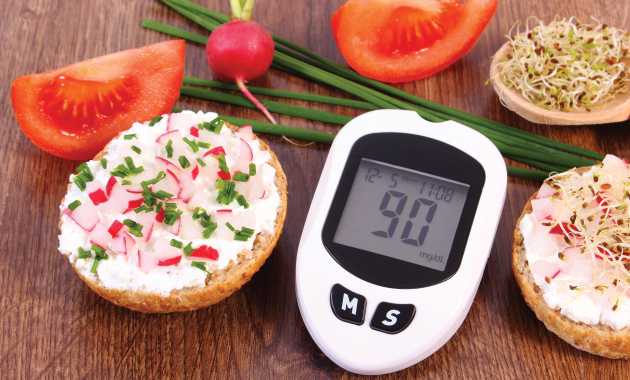
People with diabetes often remain perplexed over their meal planning which includes cutting down on almost everything from their diet. But what most people are not aware of is the fact that with simple changes in the portions and the frequency of meals, your favorite foods and your routine diet can still remain intact. Here’s how!
Know Your Food
Our daily meal comprises various nutrients like carbohydrates, proteins, fats and vitamins and minerals. Having a balanced proportion of each of these nutrients is important as each of them has a function to play in maintaining our overall health. So before you start planning your diabetic meal, here are few basic things to keep in mind:
Count the carbohydrates
It goes without saying that carbohydrates turn into glucose in your body and affect your blood glucose level more than other foods do. Choosing carbs can be intimidating as we can’t see how much of it is present in our meals. So, what best we can do is choose carbs that are nutrient-dense rich in fiber, vitamins, and minerals. For example:
– Ditch your regular atta with custom-made multi-grain atta (mix of ragi, chana dal, bajra, jowar and oats)
– Replace white rice with brown or red rice, if you are a rice eater
– Opt for a good fibre rich food as a snack
Say YES to proteins
Proteins help increase insulin response without increasing the glucose levels in the blood. This is why, people with diabetes should ensure that a minimum of 15-20% of their daily calories are coming from proteins which are high in fibre.
– Add legumes in every meal as they are rich in proteins and fibre
– Drink a glass of milk daily to get a fair amount of protein
– Consume raw or boiled vegetables (add a little seasoning for taste) more to up your protein intake
Try out Nestle Resource Diabetic Powder, a low GI diet for those with diabetes. It has high quality protein, fiber and essential vitamins and minerals that help amp up your diabetes meal planning.
Don’t leave vitamins & minerals behind!
In diabetic patients, glucose metabolism is generally not up to the mark as there is an excess production of free radicals in the body. These free radicals can cause a deficiency of vitamins such as A, C, and E, raising the risk of health complications. To counter it,
– Add natural food sources rich in Vitamin A and C to your diet like apples, oranges, strawberries, melons, etc
– Include minerals like zinc and magnesium that can help regulate glucose level
Don’t free the fats
Fats may seem like a big villain to everyone including diabetics, but that is not completely right. We should not devoid ourselves of fats as these are needed for energy, vitamin absorption and numerous other functions in the body. However, maintaining the balance and opting the right type of fats is the key. You can
– Try to grill, steam, or bake foods instead of fried foods
– Use a blend of different types of oils for cooking
– Opt for unsalted dry fruits and nuts for munching
4 Simple Handpicked Smart Choices For Diabetics
In addition to eating a healthy, balanced diet, here are some simple diet tricks to ensure a complete diabetic meal planning regimen.
1. Control salt intake: Too much salt can affect blood pressure and cause stroke, which are already some known complications of diabetes. Get creative and try to limit salt by using different types of herbs and spices.
2. Time your food: Knowing what to eat is good but having a knowledge of carefully timing when to eat may act as a game-changer in diabetes management. Generally, people with diabetes are suggested to have three meals a day at regular times. This helps utilize the insulin that your body produces or gets through a medication.
3. Be smart with snacking: No matter how well you plan your meal each day if you end up snacking or binging on processed foods, all the efforts will come out fruitless. Choose better options like yogurt, salads, and nuts.
Love eating, but diabetes making your ingredients list short? Get your daily dose of health with Nestle Resource Diabetic Powder!
4. Move more often: The only constant in diabetes management is to Keep Moving. Aim for at least 150 minutes of moderate-intensity activity a week. You can break it down into bite-size chunks of 10 minutes throughout the week or 30 minutes 5 times a week.
A diabetes diet plan is nothing but a carefully chosen eating strategy designed to grab most of the benefits from the food we eat. It’s not rocket science guys! Just plan more carefully and don’t fall prey to fancy packaged foods. Choose wisely to stay healthy.
Disclaimer: This is a sponsored article powered by Nestle. The information provided in this article in the form of text, tips, suggestions, and products, which comprises general advice for consumers. 1mg does not endorse any brands and is not responsible for their efficacy.
References:
1. Diabetes Diet, Eating, & Physical Activity. Diabetes Overview. National Institute of Diabetes and Digestive and Kidney Diseases (NIDDK). National Institute of Health (NIH). https://www.niddk.nih.gov/health-information/diabetes/overview/diet-eating-physical-activity
2. Diabetes Meal Planning. Eat. Well. Living With Diabetes. Centers for Disease Control and Prevention (CDC). https://www.cdc.gov/diabetes/managing/eat-well/meal-plan-method.html
3. Gray A, Threlkeld RJ. Nutritional Recommendations for Individuals with Diabetes. [Updated 2019 Oct 13]. In: Feingold KR, Anawalt B, Boyce A, et al., editors. Endotext [Internet]. South Dartmouth (MA): MDText.com, Inc.; 2000. https://www.ncbi.nlm.nih.gov/books/NBK279012/
4. Ley SH, Hamdy O, Mohan V, Hu FB. Prevention and management of type 2 diabetes: dietary components and nutritional strategies. Lancet. 2014;383(9933):1999-2007. https://www.ncbi.nlm.nih.gov/pmc/articles/PMC4751088/